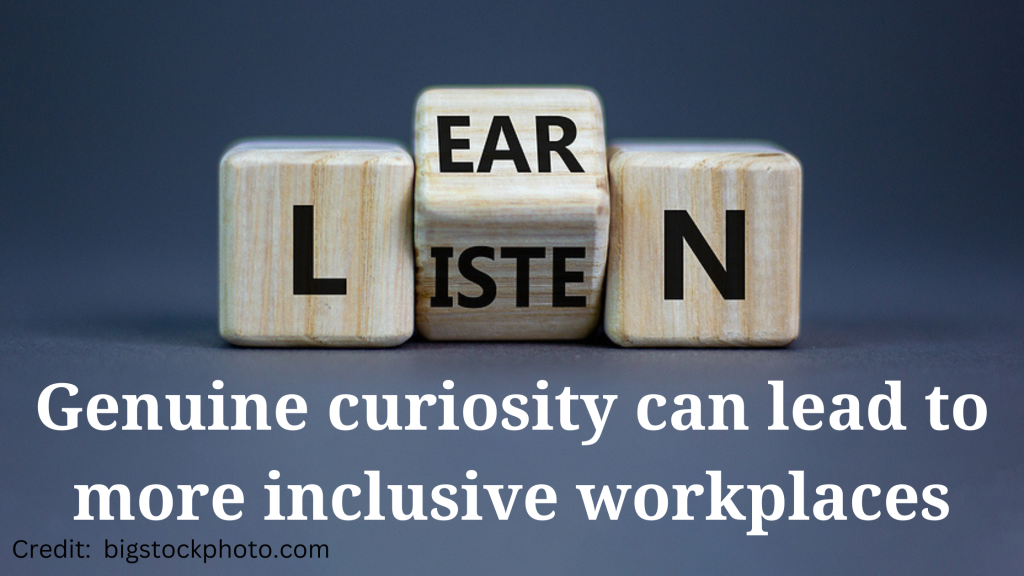
While I was writing Thanks, Again!, I had the opportunity to pitch the concept to a literary agent, who asked a question that changed the trajectory of the project.
“Is there anything in the book about DEI?”
I didn’t exactly respond, “Huh?”
But apart from understanding that she was referring to diversity, equality and inclusion I was very much lost for an answer. There wasn’t anything in the manuscript about DEI.
What does an old white guy know about DEI?
How could staff recognition be linked to DEI? How could recognition contribute to creating a more inclusive workplace, a place where everyone felt they belonged, somewhere they were comfortable being themselves?
I had to learn more before beginning to write Theme 22: Diverse and Inclusive: Recognition for Workplaces Where All Feel They Belong. First, I looked at what DEI experts were saying, but I didn’t stop there.
What I did next turned out to be the most rewarding part of researching the book. I spoke to people for whom DEI was part of their lives. I showed them what I had written so far and they told me what was missing.
They described their lives as members of a “minority.”
To be honest, I was nervous venturing into their lives. Fear of offending others can prevent us from learning more about the values and culture of those with whom we work. What will they think? Will I be showing my ignorance? Will I be asking questions to which I should already know the answers?
Fear and discomfort should not stop you from asking questions motivated by a sincere desire to learn. If you don’t engage with people, how will you increase your understanding?
I soon discovered that people welcome the opportunity to talk about their background and beliefs.
By being curious, a bond was developing with those with whom I was talking. I learned about their lived experience, which helped me understand who they are today.
In Thanks, Again, I built on an idea from Micheal Bach. In his brilliantly titled book, Birds of All Feathers, Bach suggests making “diversity moments” part of staff meetings—“when someone shares something about themselves to help educate their co-workers on the diversity that exists around them.”
Related Article: An exercise to better understand the diversity of your workplace
When presenting my Where Staff Feel They Belong at a recent convention, I conducted an impromptu diversity moment.
Spying a woman in the audience wearing a hijab, I approached her and asked if she would be willing to explain Ramadan to me and others in the room. This she did with a simple, easy-to-understand explanation of the daily fast that Muslims observe during the holy month. I believe that most left that session with a better understand of Islam.
Did she mind that I put her on the spot with my question?
“No,” she responded. “I enjoy talking about my beliefs.”
This experience reminded me of another spontaneous learning opportunity several years previously, when I asked participants in a non-credit college communication skills course to identify barriers to effective communication. “Accent” appeared on the resulting list.
Without thinking about what might go wrong, I asked the three participants who I perceived as having accents to share what they did to overcome this communication barrier.
It may have been that one of the participants misunderstood the question or that she saw this as an opportunity to say something that she felt needed to be said. Either way, the insight she provided was valuable.
“I find it really difficult to understand the accents of people in Canada.”
I like to flatter myself that both these experiences were planned to create a valuable opportunity to learn about how individuals are shaped by their backgrounds, cultures and beliefs.
Whether that was the case or not, these episodes and my experiences while researching Thanks, Again demonstrate the power of genuine curiosity to strengthen connections with others.
Be curious. Ask questions. Be attentive. Listen to learn and understand. Make yours a more inclusive workplace.

